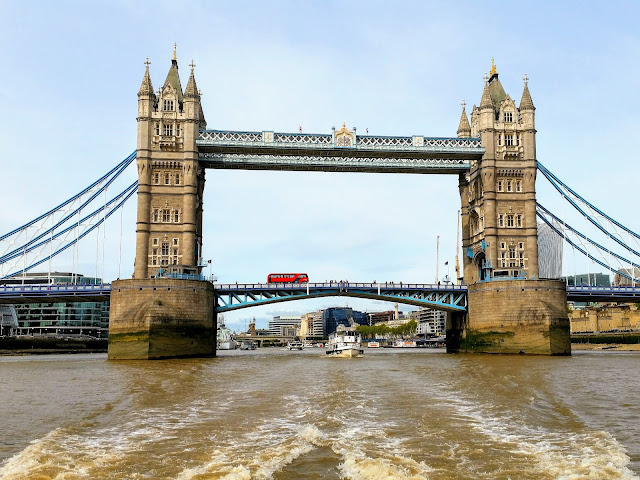 |
| Olympic Bridge. |
It was late afternoon as I travelled to the Unfinished City, to soak up the Olympic atmosphere.
After wandering around Westminster, I headed for Tower Bridge in the hopes of grabbing a few images of the Olympic Rings, which had been hung beneath her western walkway. The bridge was also being lit up with colour-changing lights, giving it an extra special look.
As night descended the bridge began going through a myriad of colour-changes, it was hard to find the perfect one to shoot. Then, as if on queue, the lights took on the colour of the Union Flag; Red, White and Blue.
Brief History
In 1876 the City of London Corporation formed the Special Bridge or Subway Committee, to solve the problem of a river crossing, to keep up with London's eastward expansion, without disrupting river traffic. The Committee decided to open up the design process to the public, receiving more than 50 designs. It would still take until October 1884, before a design would finally be chosen: That of the City Architect, Horace Jones, in collaboration with John Wolfe Barry.
 |
| The south tower. |
It would take 432 workers another 8 years to complete Tower Bridge. Considering that there was no health and safety, at the time, only 10 men lost their lives. Over 11,000 tons of steel were used to build this combined suspension and bascule bridge, much of which is supported on two massive concrete piers, which were sunk into the riverbed. This steel framework was then clad in Cornish granite and Portland stone.
 |
| Tower Bridge from the River Thames. |
On completion, Tower Bridge was the largest bascule bridge in the world, and the most sophisticated. The steam pumping engines, which were used to generate the power for the hydraulics, to raise the bascules, had this power stored in six accumulators, so that when the bridge needed to be raised, power was always available. The bascules could be raised to their maximum angle of 86 degrees, in less than a minute. In 1976, electricity and oil replaced steam to power the hydraulics.
 |
| Looking through the glass floor of the west walkway. |
In 1910 the walkways, which were open to the elements were closed to the public. A significant reason for this was a lack of use, as pedestrians preferred to wait below, rather than take the stairs up and down the towers. Also, the walkways were not a very safe place to be, especially at night, as they were place frequented by pickpockets and prostitutes. They would reopen in 1982, and are now fully enclosed from the elements.
 |
| A different view of Tower Bridge. |
In 1977, the bridge had a major face lift, when it was given a new paint job of red, white and blue, to mark the Silver Jubilee of Queen Elizabeth II. Before this new paint scheme, it had been painted a drab chocolate brown colour.
Its latest transformation has seen a new glass floor added to the walkways, giving the public a different view of the River Thames, 42 metres below.
Trivia
- In 1912, Frank McClean had to fly his biplane between the bascules and the walkways, of Tower Bridge, to avoid an accident.
- In 1952, Albert Gunton, a bus driver, had to leap his No. 78 bus from one bascule of Tower Bridge to the other, when the bridge began to rise with his bus still on it.
- At low tide the River Thames is about 9 metres deep, below Tower Bridge.
- Tower Bridge was not bombed, during World War II, as the enemy used it as a navigation landmark.
- In 1976, after 82 years of service, the steam powered engines, used to raise the bridge, were replaced with electricity.
- During its eight years of construction 432 men were employed, with only 10 fatalities.
No comments:
Post a Comment